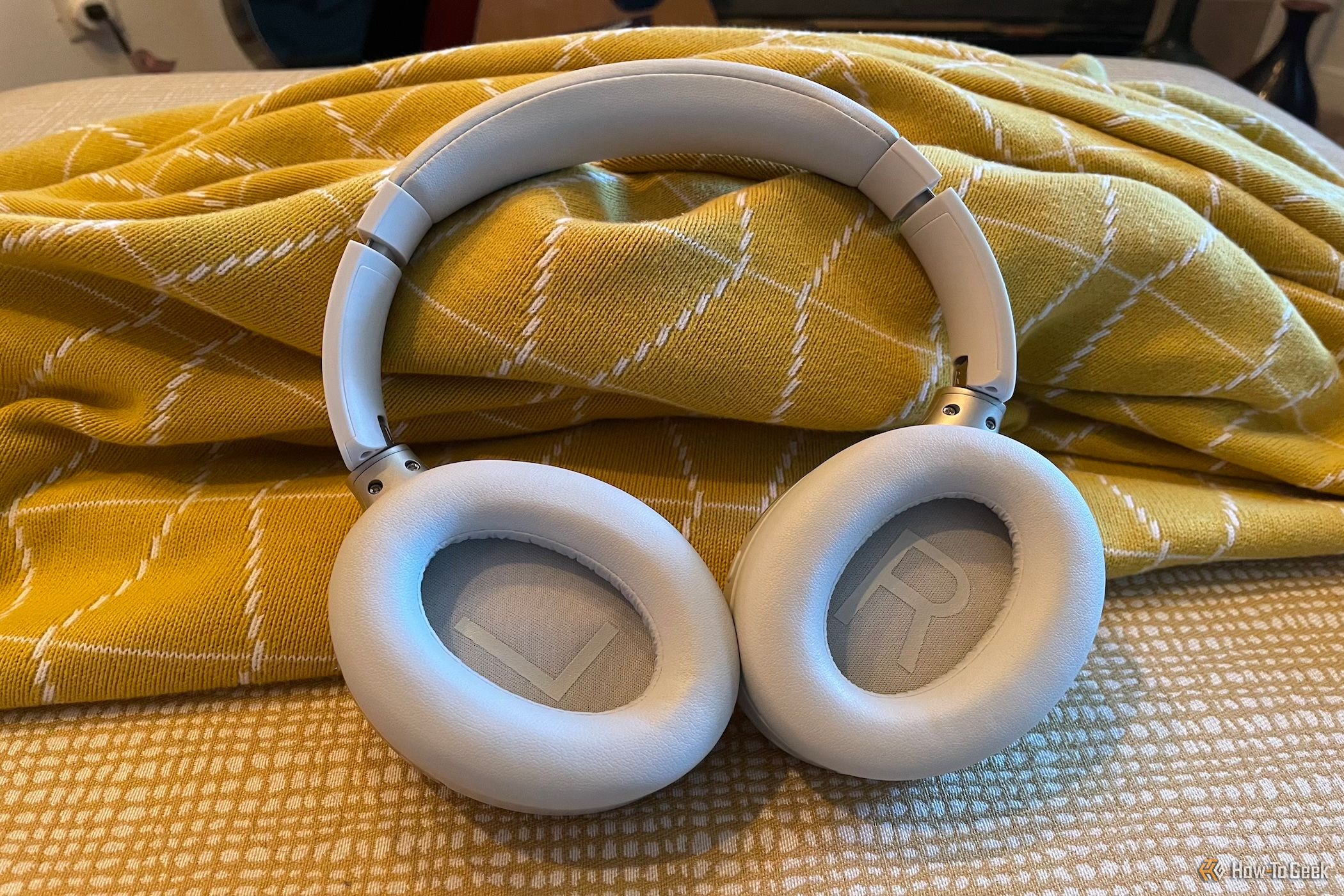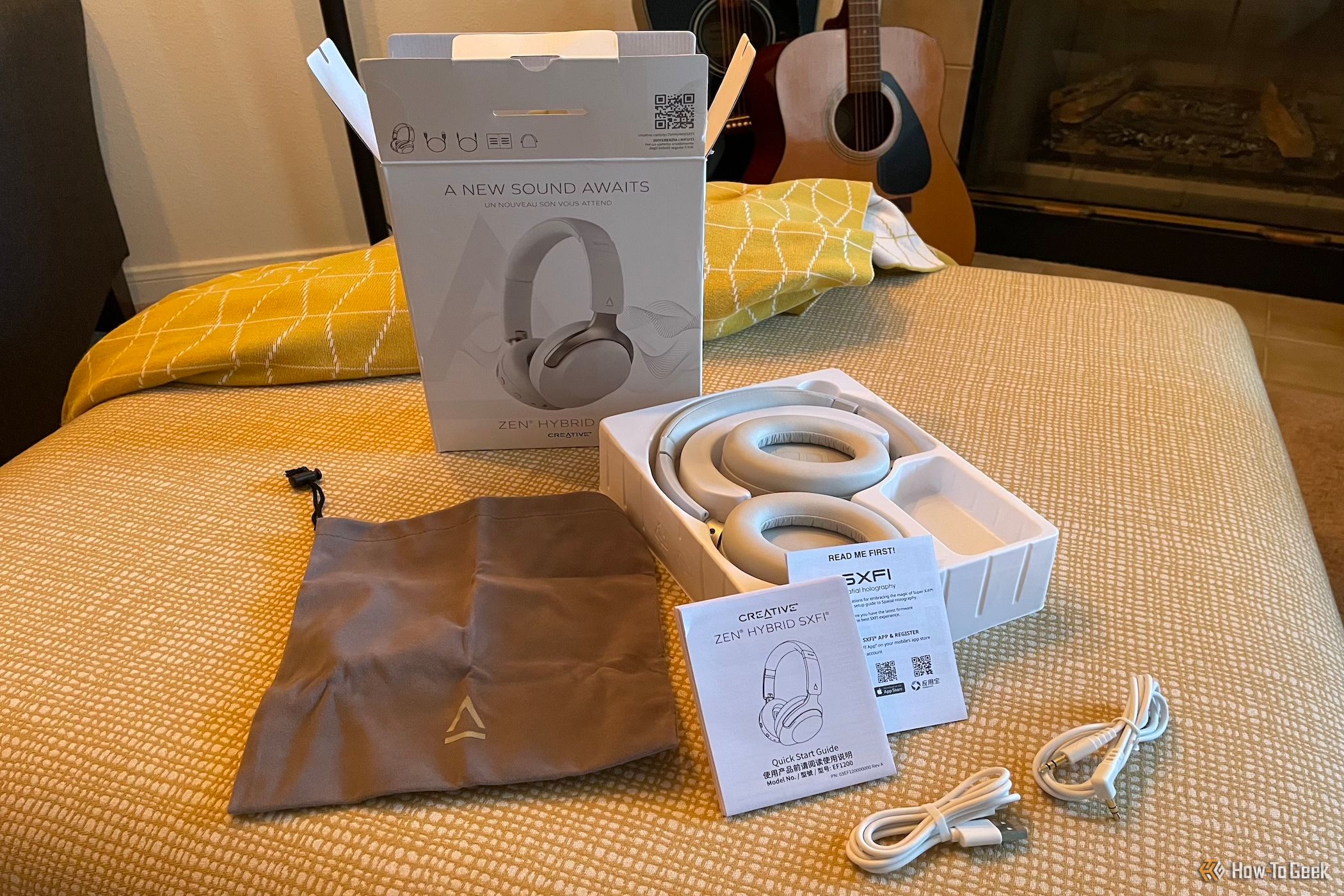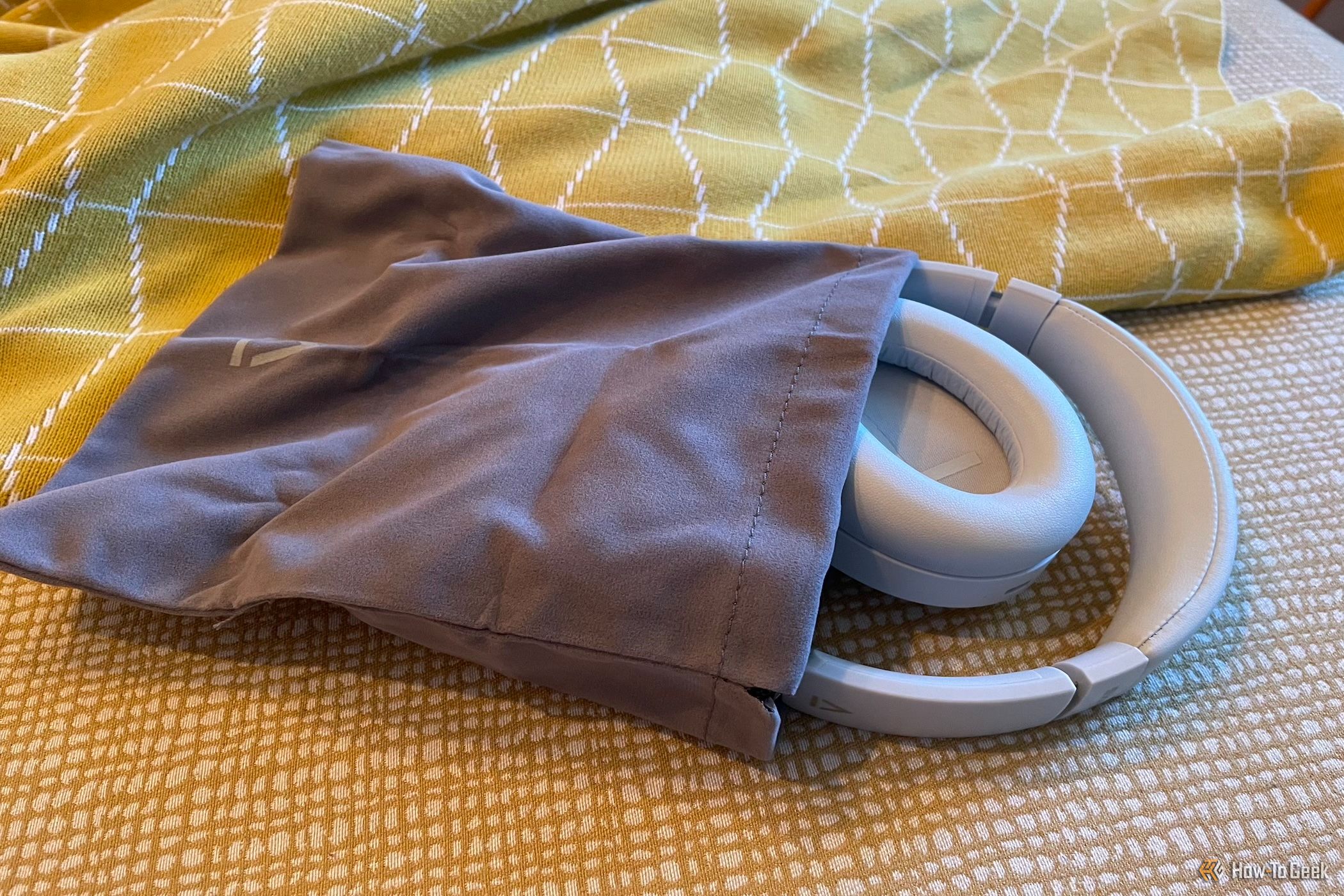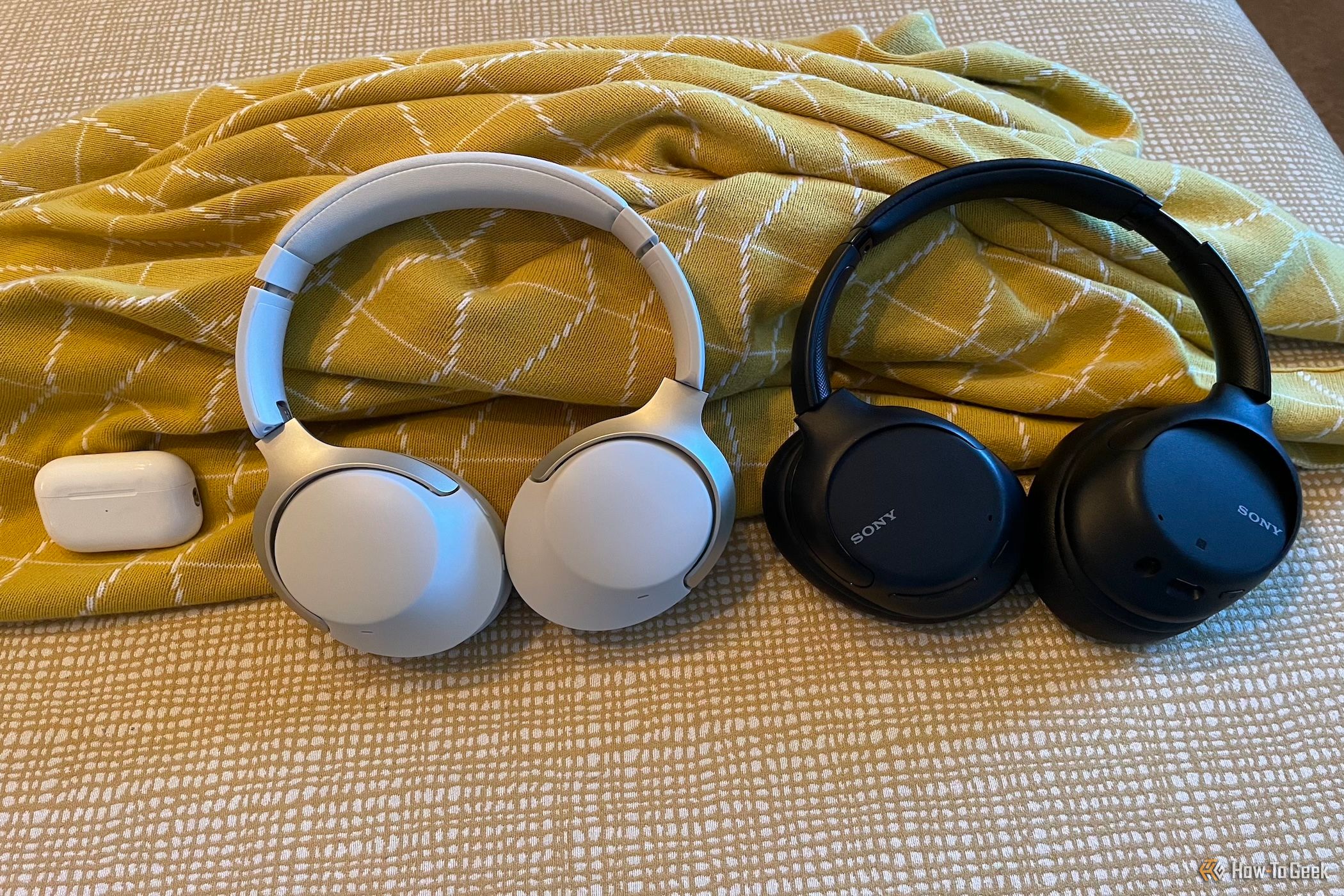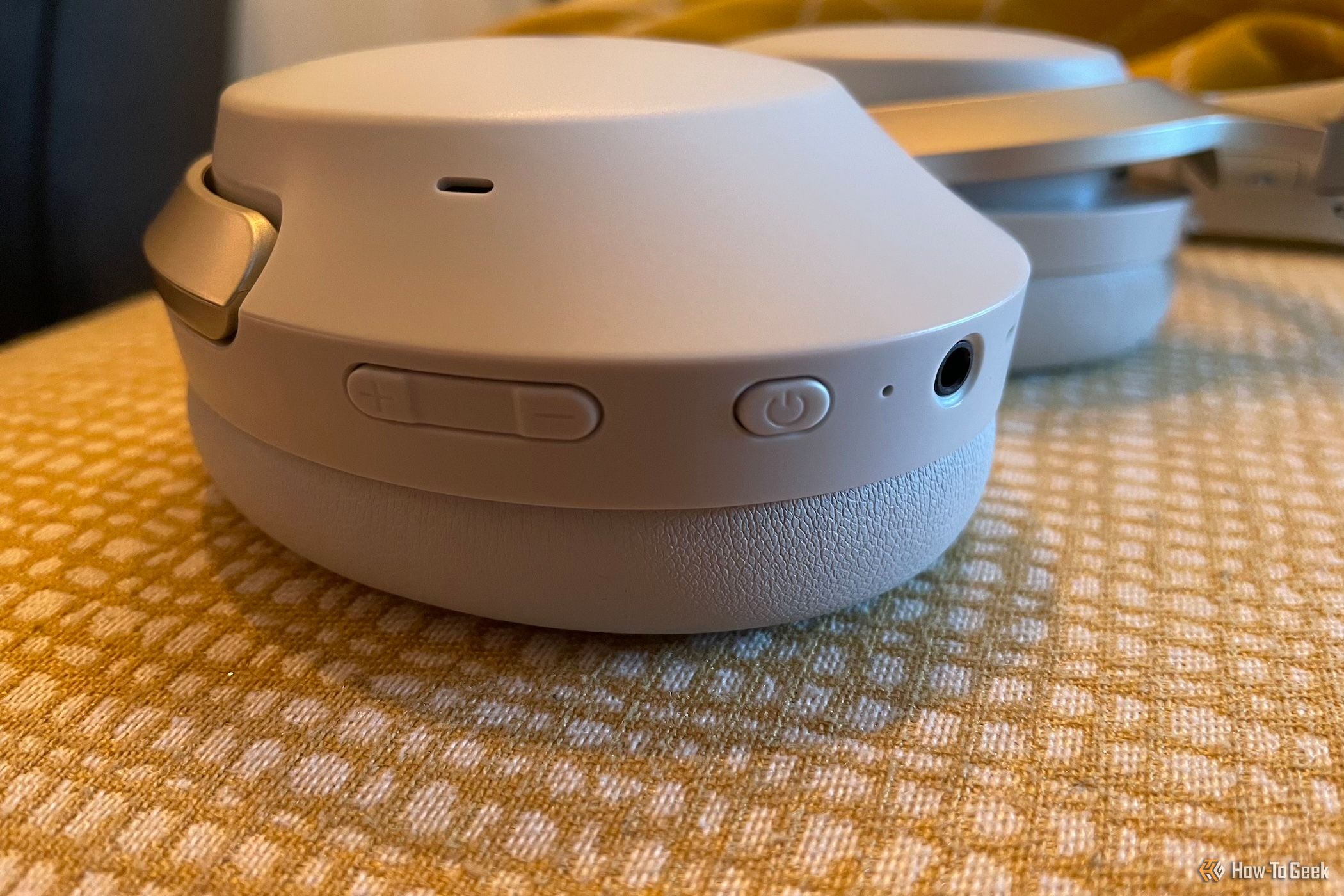Key Takeaways
- The Creative Zen Hybrid SXFI offers a comfortable fit and sleek design, but the buttons are too recessed
- Post-calibration, headphones provide good sound quality, but the default audio is subpar.
- The headphones also have decent ANC, but lack noise isolation and leak audio.
There’s no shortage of great-sounding, compelling wireless headphones in the $100 range. Creative’s Zen Hybrid SXFI headphones lean into cutting-edge spatial audio and ANC technology in an attempt to stand out from the crowd, but I wish that the company had focused on basic sound quality instead.

Creative Zen Hybrid SXFI
$95 $100 Save $5
Creative’s Zen Hybrid SXFI headphones offer cutting-edge spatial audio and decent ANC performance, but the sound quality is lacking out of the box.
- Comfortable and secure fit
- Exciting low-end performance
- Optional wired listening
- Solid companion app
- Out-of-the-box audio is rough
- Treble range lacks presence
- ANC is just okay
Pricing and Availability
The Creative Zen Hybrid SXFI headphones sell for $100 and are available at both Amazon and the Creative Labs store.
Looks Cool, Fits Comfortably
Creative’s Zen Hybrid SXFI boasts a sleek and modern design. I reviewed the white colorway, which has rose gold accents, though there’s also a black model with off-white trim. The plastic frame gives way to memory foam and faux leather cushioning, which made the Zen Hybdrid SXFI comfortable to wear for long listening sessions. The headphones are lightweight, too, and while I appreciated the lighter headband grip, a good jostle was all it took to dislodge the headphones from my ears. That said, these may not be the best headphones to go running with.
The USB-C port on the left ear cup supports charging and wired playback. Everything else is relegated to the right ear cup, including volume, a customizable power/action button, a 3.5mm auxiliary output, an ANC button, and an SXFI spatial audio toggle). I do wish the buttons were a bit more pronounced. When wearing the Zen Hybrid SXFI, I would often forget where some controls were, and the ultra-recessed button style makes it difficult to differentiate between keys. I also gave up on trying to press the SXFI button without just taking the headphones off first.
Getting the cans up and running was as simple as pressing and holding the power button to turn the headphones on and activate pairing mode. Bluetooth Multipoint worked well, allowing me to have the Zen Hybrid SXFI paired to both my iPhone 12 and MacBook Pro simultaneously. (There was about a 7 to 10-second delay when switching between media sources, though).
Besides the headphones, other box contents include a USB-C to USB-A charging cable, a 3.5mm aux cable, a quick-start guide, and a carrying pouch.
Good Sound Quality (After Calibration)
I had a bit of a love-hate debacle with the Zen Hybrid SXFI cans. On the one hand, I was able to get the headphones to sound pretty decent, but I did a fair amount of EQ tweaking in the Creative Labs app. And let’s not beat around the bush: the default sound profile for the SXFI cans is just plain bad. Regardless of the song, movie, or podcast I was listening to, each mix sounded super-flat and underpowered. I wasn’t expecting the world from the headphones’ 40mm neodymium drivers and limited codec support (SBC and AAC), but I was certainly expecting more than I heard when playing tunes for the first time.
Fortunately, after downloading the Creative app (available for iPhone and Android devices), connecting the Zen Hybrid SXFI, and adjusting a few audio settings, I was able to create a custom preset that worked well across all genres and media types. I opted for a V-shaped profile, with bass and treble cranked to about 70% and a 40% dip in the midrange.
While I appreciated the premade presets Creative bundles with its app (including presets for specific video games), I always thought my custom preset sounded better. It’s also worth downloading the SFXI app (also for iPhone and Android) to create a customized SXFI Spatial Holography profile. Head-tracking audio isn’t for everyone, but the Zen Hybrid SXFI does a great job at virtualizing a multi-channel speaker system.
The headphones sounded awesome when listening to pop, rock, and singer-songwriter material. I could really dig into the grittiness of the guitar and bass tones on tracks like Thrice’s Wake Up. Frontman Dustin Kensrue’s vocals were sharp and clear, though a bit buried in the mix. I actually noticed this loss of treble presence across other songs, too. I tried different audio presets and even dialed up the treble in my own EQ, but extra treble only led to harsh sibilance. Still, it was hard to deny the solid balance the Zen Hybrid cans were able to achieve, especially with softer acoustic songs like the Dear Hunter’s Things That Hide Away and Circa Survive’s Spirit of the Stairwell.
The Zen Hybrid worked great for movies and TV shows, too. I was particularly wowed by the near-subwoofer levels of thump the cans produced during the famous T. rex escape scene in the original Jurassic Park. It was also a thrill to be steeped in the climactic Gotham City chaos of The Dark Knight Rises. The Zen Hybrid did its due diligence in honing in on critical dialogue while explosions, people screaming, punches and kicks, and the film’s score blared defiantly in the background.
Decent Noise Canceling but Lots of Leakage
I’ve tested my fair share of ANC headphones, so don’t take it the wrong way when I say the Zen Hybrid SXFI’s noise-canceling capabilities were just mediocre. Using the ANC button on the right ear cup lets you toggle between ANC, Adaptive ANC, Ambient Mode, and zero noise altering. I liked having the ability to increase or decrease ANC strength in the Creative app, but I didn’t notice much of a difference unless the slider was dragged most of the way toward the left or right.
The Zen Hybrid SXFI did a fine job of canceling out droning low frequencies, which virtually eliminated the rumble of my apartment’s HVAC system, washer, dryer, and refrigerator. I was also able to drown out most of the sound from my bedside noise machine, with just a little hiss making its way in. Switching over to transparency made it simple to engage in conversation without removing the headphones, though I rarely switched out of ANC mode.
Remember earlier when I said the headphones had a light and comfortable fit? Unfortunately, I think there’s a bit of over-cushioning at play, as the Zen Hybrid SXFI is pretty weak when it comes to noise isolation. Even at lower volumes, a ton of audio leaks out of the ear cups, which may be distracting for those around you.
A Poor Choice for Phone Calls
I’ve yet to find an over-ear or in-ear audio device that beats the call quality of my AirPods Pro 2 wireless earbuds. But not even my treasured AirPods sound amazing when chatting with friends and family. For whatever reason, clear-crisp dialogue in the consumer tech space is still hard to get right, and the Zen Hybrid SXFI suffers from the usual two holdups: compression and wind noise.
I had no issue hearing what my partner was saying on the other end of our test calls, and she thought I sounded discernible, too. However, our voices lacked any low end and were plagued by tinny digital audio compression. And while wind noise wasn’t a significant deterrent, I wouldn’t recommend taking any calls with the Zen Hybrid on a day with any more than a regular breeze.
Don’t Worry About the Battery Life
Creative Labs claims that the Zen Hybrid SXFI headphones will last up to 70 hours with ANC disabled and up to 40 hours with ANC enabled. Creative also claims those results were captured by testing the headphones at “moderate volume levels.” While numerous variables can affect headphone battery life, I can definitely stand behind Creative’s numbers.
I treated the Zen Hybrid SXFI as my everyday wear for the better part of a week, and I never needed to recharge them. In fact, the headphones never dipped below the 70% threshold. Not bad, Creative Labs!
The Creative App is a Must
I’ve mentioned the Creative Labs app numerous times throughout this review, and I’m glad I get to talk about it again. It’s not the fanciest piece of software out there, but in my opinion, it’s 100% necessary if you want to get the Zen Hybrid SXFI sounding good. In my experience, the app always loads fast and navigating from one screen to the next is straightforward.
Most of your customization options are right on the main screen, where you’ll also see a top-center readout for headphone battery level. Below that is an option to turn SXFI listening on or off, plus options for EQ and noise-canceling controls. You can also tap the gear icon at the top-right to access additional settings, including a Low Latency Mode (a great feature for gamers), software updates, and customer support.
One little grievance: Even if you minimize the Creative Labs app, the headphones will need to re-sync to the app every time you start using it. It only takes a few seconds, but I wished the cans would just stay linked.
Should You Buy the Creative Zen Hybrid SXFI?
It’s important to think of both the casual headphone-wearer and the audio connoisseur when talking about a product like the Creative Zen Hybrid SXFI. On the one hand, these headphones can sound really great if you don’t mind switching back and forth between two or three go-to EQ presets or building a custom sound profile like I did. But I would argue that most listeners want something to sound good right out of the box.
I think it’s fair to assume that $100 headphones should at least sound decent the first time you play music, watch a movie, or listen to a podcast. On top of that, the Zen Hybrid SXFI didn’t offer the treble response I was looking for. All in all, I can’t see myself recommending the Zen Hybrid SXFI.

Creative Zen Hybrid SXFI
$95 $100 Save $5
Creative’s Zen Hybrid SXFI headphones offer cutting-edge spatial audio and decent ANC performance, but the sound quality is lacking out of the box.

